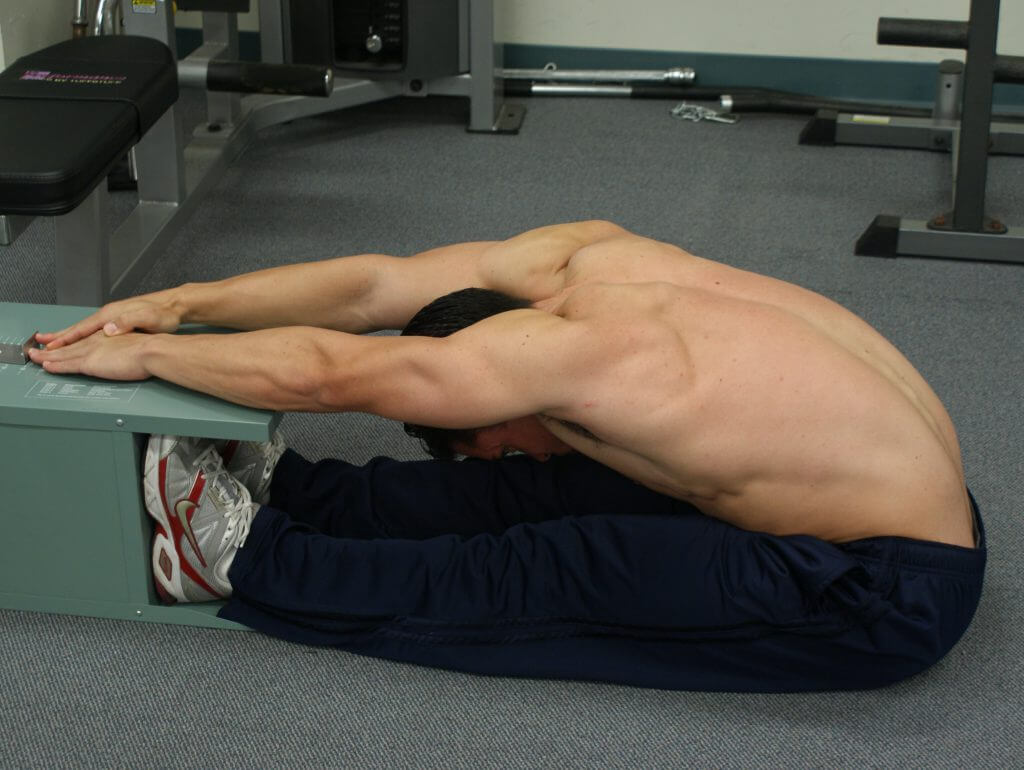Science of Performance: General Static Stretching Is a Waste of Time (Part III)

By Dr. G. John Mullen, PT, DPT, CSCS of Swimming Science, Owner of COR PT , Creator of Swimmer’s Shoulder System, Swimming Science Research Review, Swimming Troubleshooting System , and Mobility for Swimmers System , Swimming World correspondent
SANTA CLARA, California, March 13. IN Part I of this series on static stretching, I introduced a case study of a swimmer with “tight hamstrings.” Part II analyzed the negative effects of stretching before exercise. Unfortunately, stretching directly before exercise isn’t the only issue with static stretching, as it has many other myths. These myths cloud current research and often cause more harm than good, as in our case study.
Static Stretching on Chronic Strength
The effects of static stretching on strength and performance is important to understand as an athlete. Although understanding the effects of acute stretching is important, rarely does a swimmer perform a static stretch within 30 seconds of a race. Instead, how static stretching influences strength and performance over training periods influences athletic success. Unfortunately, there are few long-term studies looking at stretching. Borges Bastos (2013) had a group of trained weightlifters perform a bout of static stretching on the pectoralis muscles between bench press. After 10 weeks the results indicated stretching impairs strength and IGF-1 gains compared to those who didn’t stretch (Borges Bastos 2013).
Yet, static stretching has been shown to improve strength during the initiation of resistance training protocols in novice lifters, likely from the novelty of the stimulus (Kokkonen 2010).
Unfortunately, the research on static stretching and long-term strength are not conclusive and/or abundant. However, initial research suggests stretching impairs strength for trained athletes, which encompasses most swimmers.
Static Stretching on Muscle Soreness
Everyone has heard static stretching reduces soreness. Yes, it feels good, so it should decrease soreness … right? Yet, stretching doesn’t improve soreness (Herbert 2002). Also, excessive or abusive stretching increases soreness (Smith 1993). Physiologically, static stretching puts mechanical tension on the muscle, breaking the sarcolemma and myofilaments, resulting in soreness. Moreover, it is clear hard stretching results in inflammation (Yang 2005). Overall, if your athletes stretch, ensure they use light, non-aggressive stretching. This form of stretching minimally causes soreness, but don’t fall for the myth that it reduces soreness. Many will scoff past this research, using the “feel good” hypothesis. Just remember, psychological improvements may outweigh physiological results, so believe what you will!
Static Stretching on Reaction Time and Balance
Reaction time and balance are also important for many sports. In swimming, a start requires a quick reaction for success. Most elite swimmers have various reaction times around 0.6 seconds. Static stretching for 45 seconds appears to impair balance and reaction (Behm 2004).
Conclusion
Unlike acute performance, the influence of static stretching on long-term strength, soreness and reaction time need more research. However, the negative effects (or perhaps neutral effects) once again outweigh the benefits. Stay tuned for the benefits and practical implications of static stretching in our next piece, followed by the conclusion of our case study from part I.
Interested in learning more on static and dynamic stretching? How about self myofascial releases and other forms of mobility? Check out the Mobility for Swimmers System .
References:
1. Borges Bastos CL, Miranda H, Gomes de Souza Vale R, de Nazar? Portal M, Gomes MT, da Silva Novaes J, Winchester JB. Chronic Effect of Static Stretching on Strength Performance and Basal Serum IGF-1 Levels. J Strength Cond Res. 2013 Sep;27(9):2465-72. doi: 10.1519/JSC.0b013e31828054b7.
2. Kokkonen J, Nelson AG, Tarawhiti T, Buckingham P, Winchester JB. Early-phase resistance training strength gains in novice lifters are enhanced by doing static stretching. J Strength Cond Res. 2010 Feb;24(2):502-6. doi: 10.1519/JSC.0b013e3181c06ca0.
3. Herbert RD, Gabriel M. Effects of stretching before and after exercising on muscle soreness and risk of injury: systematic review. BMJ. 2002 Aug 31;325(7362):468. Review.
4. Smith LL, Brunetz MH, Chenier TC, McCammon MR, Houmard JA, Franklin ME, Israel RG. The effects of static and ballistic stretching on delayed onset muscle soreness and creatine kinase.Res Q Exerc Sport. 1993 Mar;64(1):103-7.
5. Yang G, Im HJ, Wang JH. Repetitive mechanical stretching modulates IL-1beta induced COX-2, MMP-1 expression, and PGE2 production in human patellar tendon fibroblasts. Gene. 2005 Dec 19;363:166-72. Epub 2005 Oct 13.
6. Behm DG, Bambury A, Cahill F, Power K. Effect of acute static stretching on force, balance, reaction time, and movement time. Med Sci Sports Exerc. 2004 Aug;36(8):1397-402.
Dr. G. John Mullen received his Doctorate in Physical Therapy from the University of Southern California and a Bachelor of Science of Health from Purdue University. He is the owner of COR PT, strength and conditioning consultant, creator of the Swimmer’s Shoulder System, and chief editor of the Swimming Science Research Review.



